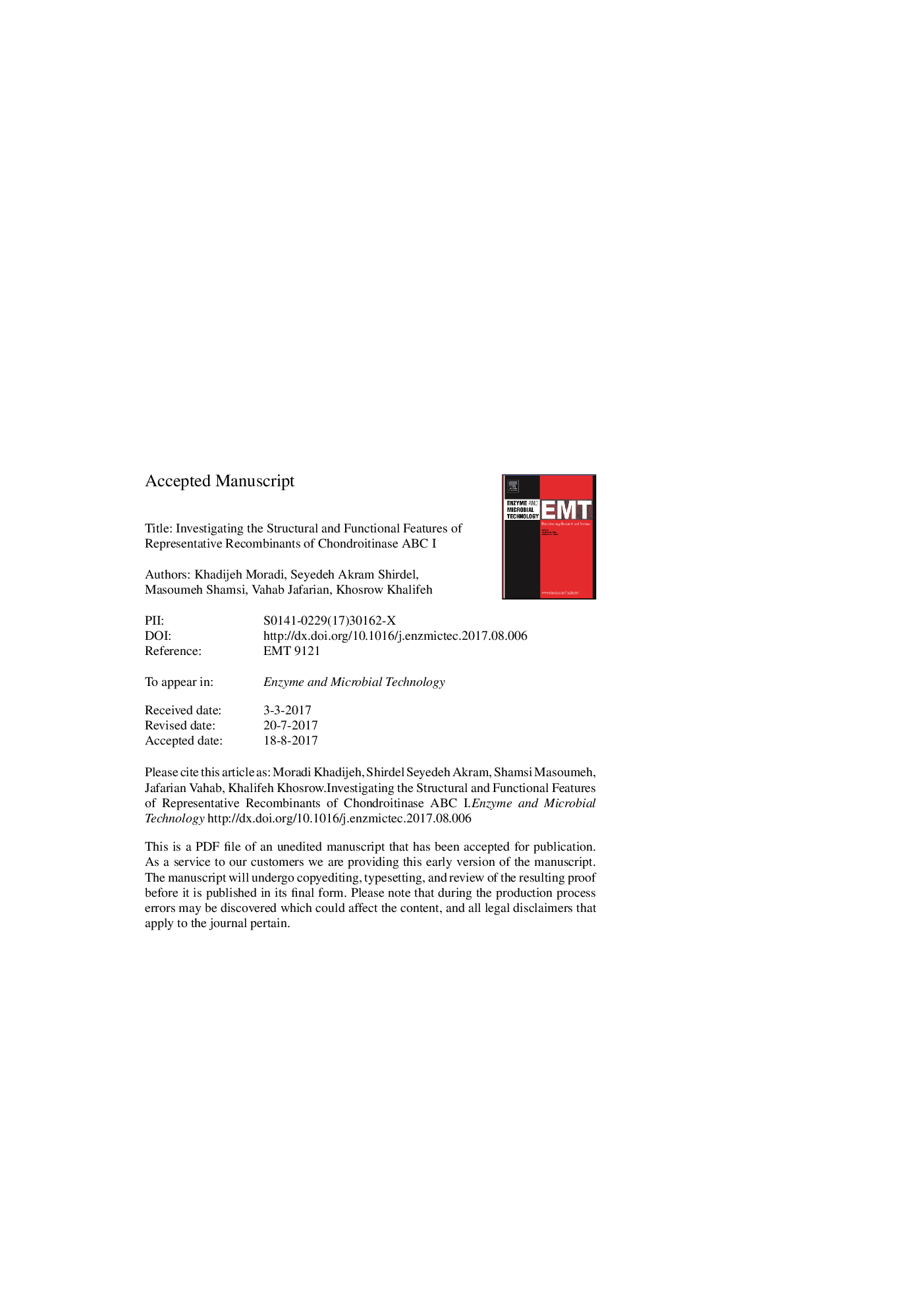| Article ID | Journal | Published Year | Pages | File Type |
|---|---|---|---|---|
| 4752694 | Enzyme and Microbial Technology | 2017 | 31 Pages |
Abstract
Chondroitin Sulfate Proteoglycans (CSPGs) are the main inhibitors for axon regeneration after damaging of Central Nervous System (CNS). Chondroitinase ABC I (cABC I) can degrade CSPGs by removing chondroitin and dermatan sulfate side chains from proteoglycans. Hence, it may be considered as an attractive candidate in biomedicine. For practical applications of this enzyme, increasing the effective circulating level and reducing the number and volume of injections for patients is one of the main concerns which is directly related to conformational stability and catalytic efficiency of the enzyme. Structural examination of C-terminal domain of cABC I reveals that there are a few numbers of residues in helical conformation which are positioned at the context of a cohesive structural organization of β-strands. In line with our previous studies on C-terminal domain of cABC I and regarding the residues in α-helix conformation; we designed and constructs some representative mutants including M889K, M889L, L679D/M889K and L679S/M889K. According to structural and functional characterization of protein variants and regarding the wide range of variability in determining parameters for β-sheet conformation, we proposed a model in which the structural integrity of β-strands at C-terminal domain can be manipulated and directed toward a new patterns of organization, some of them may have positive effects on the structural and functional features of the enzyme. Using this strategy it may be possible to improve functional and structural features of the enzyme by engineering the intra-molecular interactions in positions far from the active site of the enzyme.
Related Topics
Physical Sciences and Engineering
Chemical Engineering
Bioengineering
Authors
Khadijeh Moradi, Seyedeh Akram Shirdel, Masoumeh Shamsi, Vahab Jafarian, Khosrow Khalifeh,
